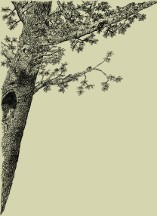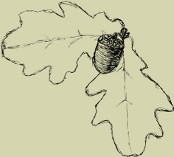42 41 40 39 38 37 36 35 34 33 32 31 30 29 28 27 26 25 24 23 22 21 20 19 18 17 16 15 14 13 12 11 10 9 8 7 6 5 4 3 2 1
Zeszyt 35 (2004)
The effect of the tracheids length on the lengthwise ultrasound transmission rate in the wood of coniferous species has been studied. The study has been performed for the samples of 12 tree species characterised by the tracheid length from 2 mm for yew tree and juniper to about 7 mm for araucaria.
Key words: ultrasound velocity, lengthwise, softwood, tracheid length
The pressure kinetics of swelling and free swelling, maximum swelling pressure and the maximum swelling of spruce wood, moistened in humid air or in water, its compressive strength at the maximum swelling pressure, along the grains, and moisture content of this wood have been determined. The admissible value of temporary swelling was 0.5 μm.
Key words: uniaxial swelling pressure, pure swelling pressure, swelling, spruce wood (Picea abies Karst.)
Bleaching of oxygen delignified kraft pine pulp with acidified hydrogen peroxide was investigated. The influence of pH of the bleaching solution, hydrogen peroxide charge, as well as the time and temperature of the treatment on chemical and technological indices of the process was evaluated. Hydrogen peroxide bleaching efficiency with the change of bleaching liquor reaction from acidic to alkaline was compared with reference to short-sequence OAP and OQP processes.
Key words: brightening, bleaching, oxygen delignified kraft pine pulp, hydrogen peroxide, acidic medium
Compositions of adhesive commercial components prepared in model versions on the base of PVAC dispersion with trade mark Winacet DP-50, polyacryl copolymer MT-117 and butyraldehyde (in the following systems: DP-50 + MT-117, DP-50 + butyraldehyde and MT-117 + chalk as filler) have been analysed by near infrared spectroscopy (NIR). Near-IR spectra of the glue mixtures were measured in the 1100-2500 nm region, using a NIRSystems 6500 spectrophotometer. The analytical data from NIR spectra were correlated in quantitative aspects of the components of glue mixtures by Partial Least Squares Regression (PLSR) and Multiple Linear Regression (MLR).
Key words: polyvinylacetate dispersion, polyacrylate copolymer, butyraldehyde, filler, adhesive composition, NIR spectroscopy, quantitative analysis
Investigations of the elasticity modulus in bending and the bending strength of particleboards layers are presented. Three directions of the bending axis were considered: the direction of the mat forming, the direction perpendicular to it and the direction perpendicular to the board itself.
Key words: particleboard, face layer, core layer, modulus of elasticity, bending strength
The analysis of sensitiveness to cracking of various sorts of wood by drying is the subject of this paper. The development of micro- and macrocracks in oak, pine, and birch samples generated due to shrinkage and the drying induced stresses is analyzed with the help of acoustic emission (AE). The plots of the AE signals and the AE energy recorded on line during drying from these sorts of wood indicate a differentiated tendency of them to shrinking and cracking. The results of this analysis may help the researchers and engineers dealing with wood to more profound understanding of the phenomenon of wood behavior by drying.
Key words: drying, oak, pine, birch, acoustic emission, development of cracks
Extremely different opinions are found on the cost-effectiveness of air pre-drying of timber in temperate climate. The objective of the paper was to present results of the two-year experiments on timber air pre-drying of two different species (e.g. oak and pine) and two different thicknesses, as well as different dates of the pre-drying start. The obtained results were used to derive empirical models describing the rate of moisture content change. The obtained models were used in the computer software to predict pre-drying time depending on a date of the start of the process, species, thickness, initial and final moisture content. The analysis was completed by estimation of costs of pre-drying with previously developed and tested procedure.
Key words: cost-effectiveness, drying rate, Scots pine, European beech
Machining in respect to the length and width dimensions of the elements of the duo-parquet in the industry conditions was the focus of the presented studies. The research applied evaluation of the results of the PC program STAT-9000; indexes of qualitative ability of the process were calculated and control cards Shewhart x − s were constructed.
Key words: duo-parquet, dimension exactness, control card















 Pobierz PDF
Pobierz PDF